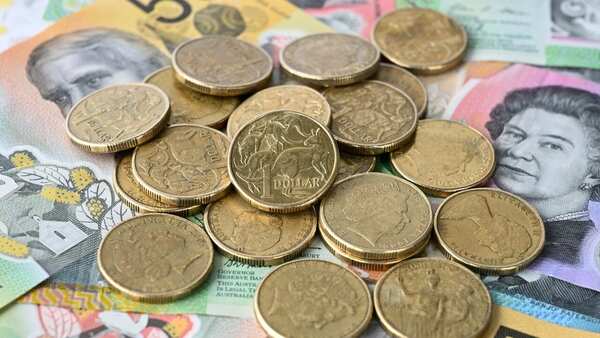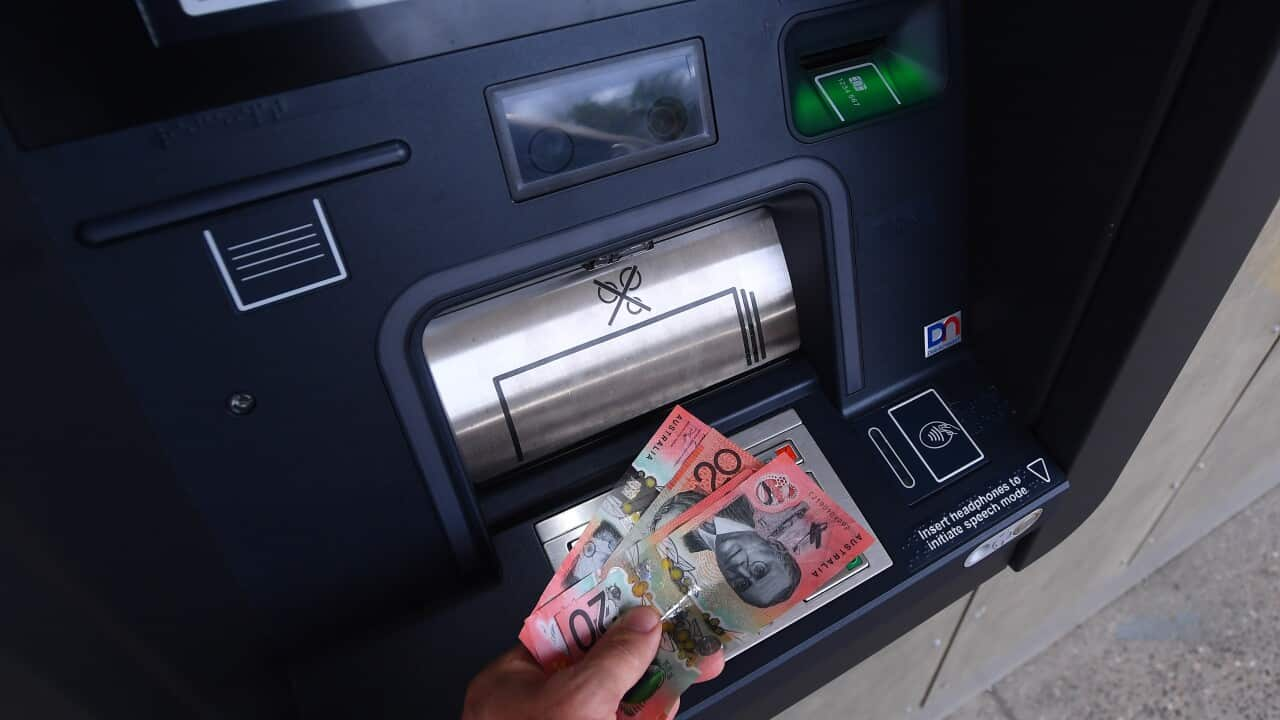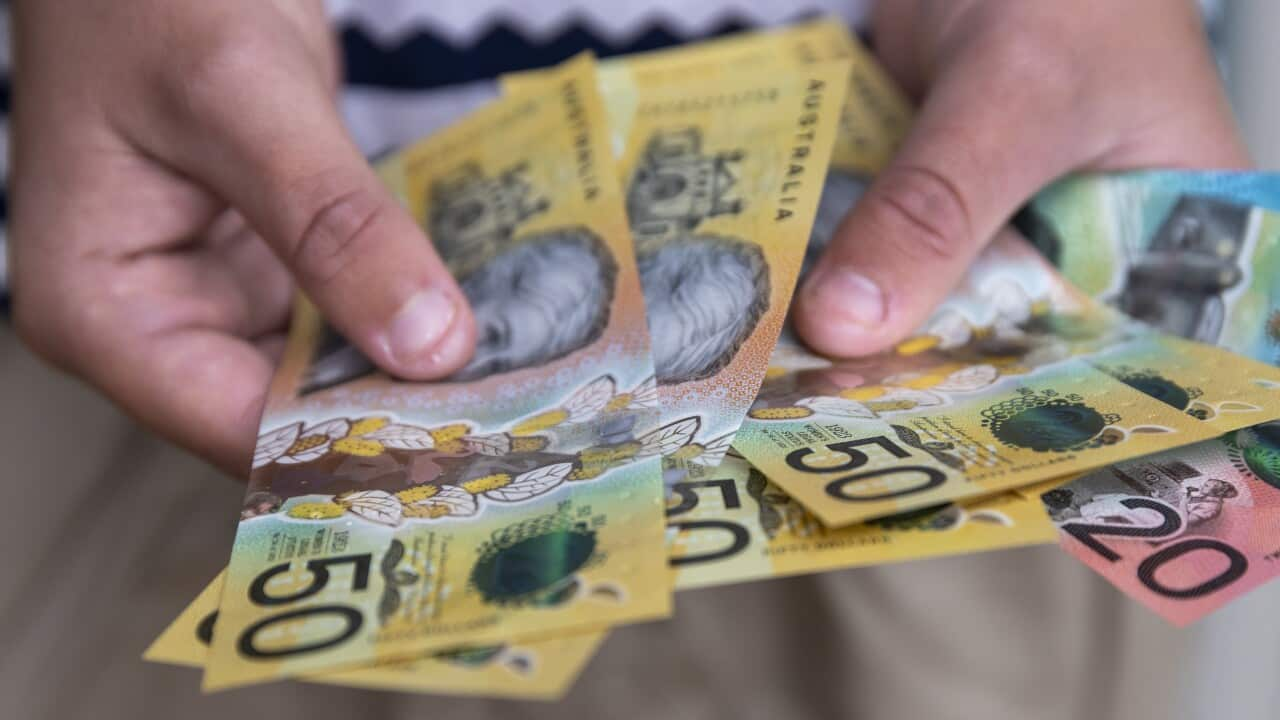Jason Bryce noticed it during the height of the COVID-19 pandemic.
His local bank branch closed, as did three ATMs. Then the local supermarket temporarily went cashless.
"Card companies were talking about the dirtiness of cash, and people were saying, 'We've got to go cashless'," Bryce told SBS News.
"That led to a big decline in the use of cash, and it looked like the cashless society was inevitable."
The loss of the ability to pay in cash spurred Bryce to launch an advocacy group Cash Welcome, which encourages the use of cash to ensure it remains an option for consumers.
The group is calling for a nationwide campaign on Tuesday to get people to withdraw some cash and "remind the banks and the government that cash is important to Australians".
"Have money in your pocket so you can pay with stuff if you need to, but [Tuesday], particularly, it's like a vote against their cashless Australia," Bryce said.
Is a cashless society inevitable?
Around 1.5 million Australians mostly use coins and paper notes to make purchases every day.
But there's been a steady decline in the use of cash — and it took a new turn during COVID-19.
From 2019 to 2022, the share of in-person transactions made with cash halved, from 32 per cent to 16 per cent, according to the latest data from the Reserve Bank of Australia (RBA).
RBA's next report is due this year, but in the meantime, reports from other groups indicate the outlook for the prevalence of cash looks grim.
Cash will make up only 7 per cent of in-person transaction value by 2030, a drop from the current 10 per cent.

Australians' most preferred payment method is prepaid or debit cards, according to a report from payments provider Worldpay. Source: SBS News
But the group expects digital wallets will soon be the preferred option, capturing just over half of online and 38 per cent of in-person transaction value.
"Cash's share of in-person shopping value dropped by more than two-thirds from 2014 to 2024. Yet the story of cash in Australia is one of a staunch defence," the report said.

Australians mostly use debit cards or prepaid methods for online purchases, with credit cards a close second, according to a report by payments provider Worldpay. Source: SBS News
Angel Zhong, associate professor of finance at RMIT University, believes Australia will be a functionally cashless society by 2030.
"That means the majority of payments will be in digital method. But it doesn't mean that you can't use cash," she told SBS News.
"So I don't think people need to panic when it comes to the movement towards a cashless society, because we're talking about a functionally cashless society, not a fully cashless society."
Earlier this year, RBA governor Michele Bullock said cash would "be around probably for another 10 years".
LISTEN TO

Cash used to be king; but more people are saying no to coins and notes
SBS News
07:10
What are countries doing about cash's viability?
In the United Kingdom, 99.3 per cent of people in urban areas are within 1.6km of a free-to-use cash access point offering withdrawals, while this drops slightly to 98.7 per cent in rural areas.
Some countries, such as Spain, France, Norway, and Denmark, as well as some states in the United States, have implemented mandates that require businesses to accept cash.
Last year, the federal government announced Australia would join the ranks from 1 January 2026. This mandate would require businesses supplying essential goods and services to accept cash, though details about which specific businesses have not yet been outlined.

While Australia is moving towards a cashless society, cash usage remains relatively higher than in some Asian markets where the shift to digital payments is more pronounced, according to the Worldpay Global Payments report. Source: SBS News
The mandate will also phase out cheques — they will stop being issued by 30 June 2028 and will no longer be accepted from 30 September 2029.
Why do people prefer cash?
Exorbitant transaction surcharges and fees, security of your personal information, and reliability during tech outages are just some of the reasons why people prefer to stick to cash.
Last year, shoppers at Coles and Woolworths reported being unable to make purchases.
"That incident, along with the others like the Optus incident, they highlighted some of the vulnerability of digital payments," Zhong said.

A graph showing how the number of bank branches and ATMs has fallen in Australia. Source: SBS News
"And I think there's been a big realisation in Australia that you don't want to get caught out without a $50 note or a $20 note in your pocket, because you don't know what's going to happen."
Interestingly, amid the gradual decline in cash use for transactions, demand for banknotes spiked during the COVID-19 pandemic.
The value of banknotes in circulation increased by 22 per cent, or $19 billion, between March 2020 and its peak in December 2022, according to the RBA.
This, the central bank said, suggested banknotes were being hoarded to store wealth or for precautionary savings.


